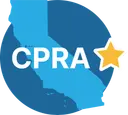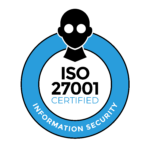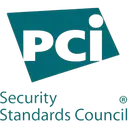Procurement compliance is an essential activity that ensures the integrity of an organization’s purchasing activities.
Procurement compliance involves a strategic approach to following established purchasing rules, procedures, and policies, which are pivotal for organizations aiming to meet goals like improved business agility, increased efficiency, and cost savings. Beyond the financial benefits, it serves as a shield against risks such as data breaches and ensures adherence to stringent regulations like GDPR, thereby fortifying your organization’s defenses.
Key takeaways
- Procurement compliance is essential for organizational integrity and involves adhering to regulations, contracts, policies, and sustainability efforts, leading to improved agility, efficiency, and cost savings while mitigating risks like data breaches.
- Metrics and KPIs are crucial for tracking procurement compliance, indicating performance efficiency, and enabling risk management and cost-saving opportunities.
- Best practices for ensuring procurement compliance include developing clear policies, training employees, implementing strong internal controls, leveraging technology for automating processes and managing suppliers, and fostering interdepartmental collaboration for comprehensive compliance strategies.
Understanding procurement compliance
The synergy between compliance and enterprise procurement functions is not just about ticking boxes; it’s a symbiotic relationship where compliance sets the criteria for achieving desired outcomes—like cost savings, robust supplier management, and effective risk management—and procurement rises to the challenge to fulfill these criteria. It’s a partnership that, when executed well, provides a range of benefits across industries, enabling better risk management and potential cost reductions.
Four pillars of procurement compliance
There are four key pillars of procurement compliance:
- Regulatory compliance
- Contractual compliance
- Internal policy compliance
- Sustainability compliance
Each pillar plays a critical role in managing risks and saving costs for key stakeholders.
- Regulatory compliance demands adherence to a plethora of rules that vary depending on the organization’s location, size, and industry.
- Contractual compliance, on the other hand, ensures that vendors stay true to their commitments and fulfill contracts to the letter.
- Internal policy compliance is enforced through detailed checklists that target major phases of the procurement cycle, ensuring that the organization’s procurement rules are followed with precision.
- Sustainability compliance, increasingly important in today’s eco-conscious world, is measured by assessing supplier performance in areas like energy efficiency and waste reduction.
Together, these components form the bedrock of a smart supply chain management system that upholds compliance as a critical component of its operations.
Understanding the role of the procurement department
The procurement department is responsible for:
- Being the steward of an organization’s purchasing integrity
- Arming procurement activities with necessary guidelines and policies that comply with procurement laws and regulations
- Ensuring transparency and fair competition
- Managing costs and compliance with a keen eye on the risks that could impact the budget
- Fostering standardized internal controls
- Addressing accountability, conflicts of interest, and corruption
Furthermore, an integrative procurement approach can lead to:
- More efficient business operations
- A competitive edge
- Nurturing supplier relationships
- Managing a seamless supply chain
- Maximizing procurement ROI through strategic decision-making and meticulous planning
Metrics for tracking procurement teams
Navigating the complex landscape of procurement compliance requires a set of guiding metrics. Key metrics like:
- contract compliance
- spend under management
- supplier count
- invoice-to-PO matching
serve as reliable guides, aiding procurement teams in tracking compliance and pinpointing potential pitfalls. Regular review of contract compliance, for instance, ensures that suppliers are upholding their end of the bargain, which in turn promotes the timely delivery of quality goods and services.
Some vital metrics for procurement include:
- Spend under management: representing the portion of spending that’s actively controlled by the procurement department. It’s a critical indicator of the value that procurement brings to the table, spotlighting areas for improvement and value maximization.
- Supplier count: monitoring the number of suppliers provides a clear view of the organization’s spend, ensuring that every transaction aligns with official processes and approval workflows.
- Invoice-to-PO matching: performing this matching process ensures that invoices align with purchase orders, providing visibility and control over the organization’s spend.
These metrics help the procurement department achieve optimal tracking and optimization of its spending processes.
Analyzing compliance metrics
Key Performance Indicators (KPIs) enable procurement professionals to evaluate the efficiency of the procurement process, indicating areas ripe for process improvement and ensuring alignment with organizational goals. By monitoring KPIs such as:
- Purchase order cycle time
- Spend under management
- Supplier quality rating
- Supplier availability
procurement teams, guided by procurement leaders, can effectively manage risks, streamline operations, and uncover opportunities for savings. With a well-organized procurement team in place, businesses can achieve their strategic goals more efficiently.
The power of effective KPI analysis extends beyond evaluation—it’s a predictive tool that can forecast procurement risks, ensuring vendor reliability and aiding in the development of strategies geared towards procurement sustainability and performance optimization. Ultimately, the analysis of compliance metrics is a proactive step towards not just tracking but also improving compliance across the procurement function.
Best practices for ensuring procurement compliance
Establishing procurement compliance necessitates a roadmap of best practices. Here are some key steps to follow:
- Develop actionable policies that direct officers and vendors to meet compliance requirements effectively.
- Provide training to employees to enhance their procurement tool knowledge and skills for proficient compliance management.
- Implement strong internal controls to guide procurement processes efficiently and ensure alignment with compliance requirements.
By following these steps, you can establish and maintain effective procurement compliance, ultimately helping to improve compliance within your organization.
Effective supplier screening is pivotal, facilitated by tools like approved supplier lists and performance tracking systems. These tools not only aid in managing supplier relationships but also in maintaining supply chain transparency and avoiding disruptions.
By working with preferred suppliers, regular audits reinforce the compliance framework, deterring fraud, and aligning operations with compliance standards. Additionally, compliance checklists should be designed to be user-friendly and include risk management indicators, guiding staff through the supplier evaluation process with ease.

Continued reading
Your guide to comprehensive risk management
Vendor risk is just one piece of the puzzle. See how you can build a cohesive compliance and risk strategy.
Leveraging technology
Technology has revolutionized procurement compliance. Automating business processes through procurement software solutions not only enhances performance but also ensures compliance, making the procurement process more efficient and reliable. Dedicated procurement and supplier performance management tools, for instance, refine SaaS procurement compliance and streamline supplier onboarding.
Digital adoption platforms offer immersive experiences that improve procurement tool usage and training, bolstering compliance across all stakeholders. Rolling out new procurement technology can establish compliance standards, but it’s crucial to provide ample resources and time for teams to adapt, which can help overcome resistance to change.
Overcoming procurement compliance challenges
Staying updated with regulations and amendments, such as those in the Federal Acquisition Regulation (FAR), is essential to prevent disruptions in the procurement process. Cybersecurity is another pressing concern; procurement departments must be vigilant to protect against data breaches and comply with security regulations, emphasizing the importance of robust cybersecurity practices.
Proactive risk management tools and supplier management practices, including thorough vetting and inclusion of compliance clauses in contracts, are vital in managing supplier risks and ensuring compliance. Effective strategies to address communication bottlenecks and construct robust compliance strategies include investing in digital transformation, enhancing procurement transparency, and seeking expert advice.
Integrating compliance with procurement processes
To ensure compliance isn’t merely an afterthought, it should be incorporated into procurement processes.
Standardization of procurement processes is a critical step in managing and reducing the risk of non-compliance, simplifying analysis, and identification of deviations. Integrating compliance ensures that company spend management sticks to approved policies, staving off unauthorized spending. Centralized procurement systems not only enhance security but also facilitate better risk mitigation.
A transparent procurement policy, which minimizes duplication of purchases and enhances transaction tracking, is essential to prevent unauthorized purchases and reinforce compliance governance. Consolidating suppliers reduces risks associated with overspending and price volatility and cuts costs on freight and handling.
Fostering a culture of agility makes procurement functions more proactive and adaptable to changes, which is essential in today’s fast-paced business environment.
Collaboration between departments
Crafting effective compliance solutions requires the collective effort of multiple departments within an organization.
Interdepartmental collaboration, especially with procurement, is vital in crafting all-encompassing compliance mechanisms that effectively cater to the entire organization. Stakeholder engagement from affected departments in the compliance design process ensures better-tailored solutions and instills a sense of ownership among those responsible for implementing them.
This multi-departmental approach not only overcomes resistance but also increases acceptance and support for compliance measures. Aligning procurement practices with financial insights and growth forecasts from all business units is crucial to avoid suboptimal spending and reinforce compliance governance.
Summary: Procurement best practices are a cornerstone of every successful business
By understanding the key components of procurement compliance, leveraging metrics for tracking, adopting best practices, and embracing technology, organizations can master compliance and reap substantial benefits.
Overcoming challenges, integrating compliance into procurement processes, and fostering departmental collaboration are vital steps on this journey.
Dedication to procurement compliance can lead to significant organizational advancements and savings.
More FAQs
How do you ensure procurement compliance?
To ensure procurement compliance, follow best practices such as understanding risks, scheduling regular audits, creating an approved supplier list, finding the right balance in procurement, and using vendor management software with automation functionality. These steps will help mitigate risks and ensure adherence to compliance standards.
What are the seven stages of the procurement process?
The seven stages of procurement are:
- Identification of need
- Vendor identification
- Solicitation planning
- Solicitation
- Vendor selection
- Contract administration
- Contract closeout
Each stage plays a crucial role in the procurement process.
How can technology improve procurement compliance?
Technology, like a procurement software solution, can improve procurement compliance by automating processes, enhancing performance, and ensuring adherence to compliance standards through tools like procurement software solutions and digital adoption platforms.
What metrics are essential for tracking procurement compliance?
Essential metrics used to measure compliance on procurement teams include:
- Contract compliance
- Spend under management
- Supplier count
- Invoice-to-PO matching
These metrics are crucial for monitoring adherence to compliance and identifying potential issues.
How can organizations overcome challenges in procurement compliance?
To overcome challenges in procurement compliance, organizations should stay updated with regulations, manage supplier risks, enhance transparency, and seek expert advice to build robust compliance strategies. These actions will help in meeting compliance requirements effectively.
Recommended for you
Accelerate your growth through SOC 2 compliance
How do you use your SOC 2 report to unlock growth for your company, accelerate deals and open new markets? Read this guide to find out.

Related Posts
Stay connected
Subscribe to receive new blog articles and updates from Thoropass in your inbox.
Want to join our team?
Help Thoropass ensure that compliance never gets in the way of innovation.














.png)